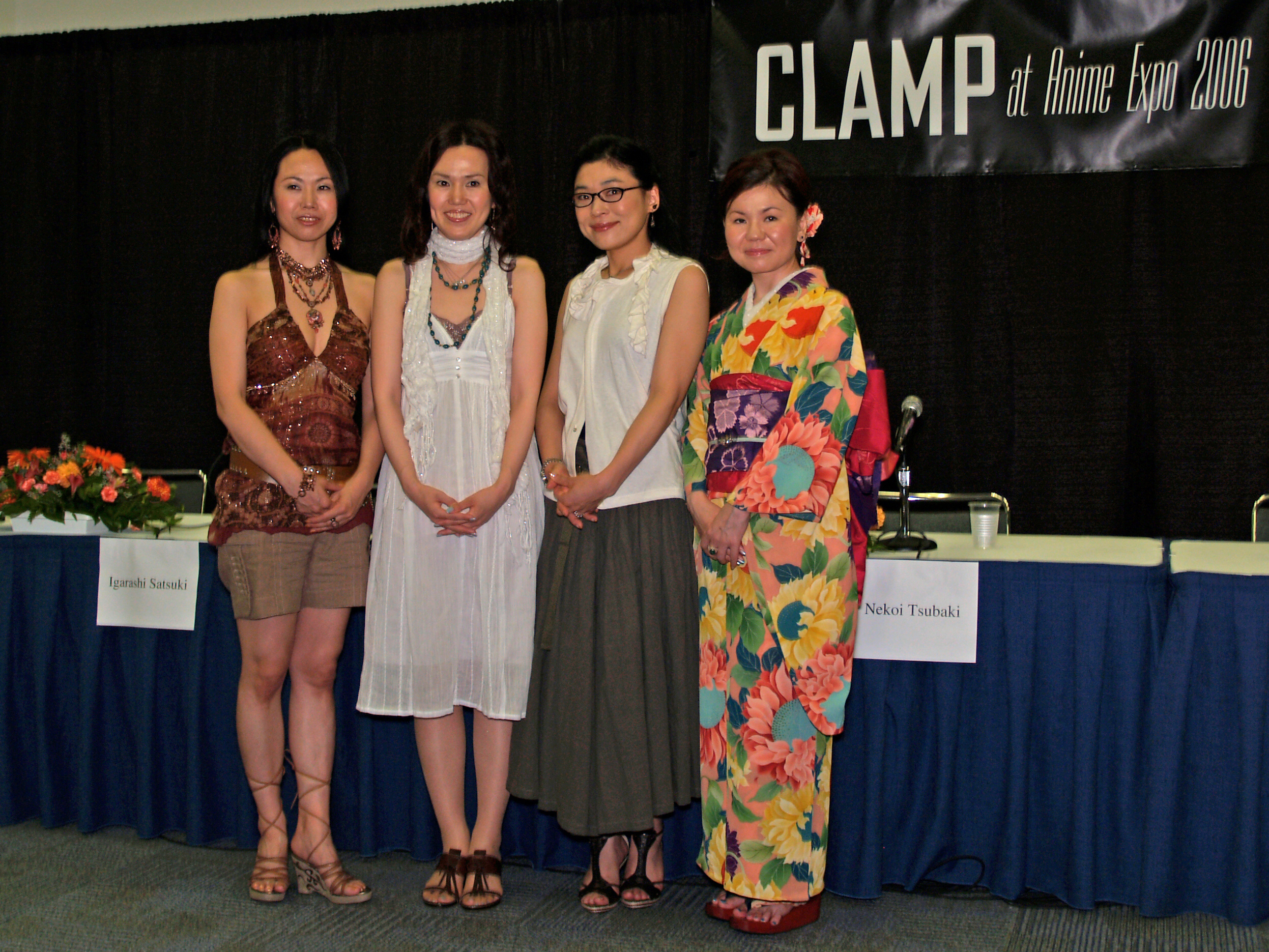|
Puni Puni Poemy
is a Japanese two-part original video animation spin-off from the ''Excel Saga'' manga and anime television series. It features some of that series' secondary characters and many of its staff, primarily director Shinichi Watanabe. Like ''Excel Saga'', it is a parody of other anime, manga and various aspects of popular culture, though in this case with the magical girl genre providing its primary focus and general structure. The series was originally an in-joke from an episode of ''Excel Saga''; Watanabe decided to take the in-joke to its most extreme logical conclusion, creating the series. Episodes ''Puni Puni Poemy'' comprises two episodes, both around 26 minutes in length. * Part 1 - Poemy is in a Bad Mood :The introductory sequence shows Poemy fighting shadowy figures of various other magical girls such as Usagi Tsukino from ''Sailor Moon'', Tickle from ''Majokko Tickle'', Utena from ''Revolutionary Girl Utena'', Megu and Non from ''Majokko Megu-chan'', Sakura Kinomoto ... [...More Info...] [...Related Items...] OR: [Wikipedia] [Google] [Baidu] |
Magical Girl
is a subgenre of Japanese fantasy media (including anime, manga, light novels, and live-action media) centered around young girls who possess magical abilities, which they typically use through an ideal alter ego into which they can transform. The genre emerged in 1962 with ''Himitsu no Akko-chan'', followed by ''Sally the Witch'' in 1966 produced by Toei Animation. A wave of similar anime produced by the studio in the 1970s led to being used as a common term for the genre. In the 1980s, the term was largely replaced by "magical girl", reflecting the new popularity of shows produced by other studios, including ''Magical Princess Minky Momo'' and ''Creamy Mami, the Magic Angel''. In the 1990s, '' Sailor Moon'' introduced the concept of a "transforming heroine" who fights against forces of evil, a synthesis of elements from hero shows that became a staple for magical girl series that followed. The growth of late-night anime in the early 2000s led to a demographic shift for ... [...More Info...] [...Related Items...] OR: [Wikipedia] [Google] [Baidu] |
Sailor Moon
is a Japanese manga series written and illustrated by Naoko Takeuchi. It was originally serialized in Kodansha's ''shōjo'' manga magazine ''Nakayoshi'' from 1991 to 1997; the 52 individual chapters were published in 18 volumes. The series follows the adventures of a schoolgirl named Usagi Tsukino as she transforms into Sailor Moon to search for a magical artifact, the . She leads a group of comrades, the Sailor Soldiers, called Sailor Guardians in later editions, as they battle against villains to prevent the theft of the Silver Crystal and the destruction of the Solar System. The manga was adapted into an anime series produced by Toei Animation and broadcast in Japan from 1992 to 1997. Toei also developed three animated feature films, a television special, and three short films based on the anime. A live-action television adaptation, ''Pretty Guardian Sailor Moon'', aired from 2003 to 2004, and a second anime series, ''Sailor Moon Crystal'', began simulcasting in 2014. ... [...More Info...] [...Related Items...] OR: [Wikipedia] [Google] [Baidu] |
Japanese Animation
is hand-drawn and computer-generated animation originating from Japan. Outside of Japan and in English, ''anime'' refers specifically to animation produced in Japan. However, in Japan and in Japanese, (a term derived from a shortening of the English word ''animation'') describes all animated works, regardless of style or origin. Animation produced outside of Japan with similar style to Japanese animation is commonly referred to as anime-influenced animation. The earliest commercial Japanese animations date to 1917. A characteristic art style emerged in the 1960s with the works of cartoonist Osamu Tezuka and spread in following decades, developing a large domestic audience. Anime is distributed theatrically, through television broadcasts, directly to home media, and over the Internet. In addition to original works, anime are often adaptations of Japanese comics (manga), light novels, or video games. It is classified into numerous genres targeting various broad and nic ... [...More Info...] [...Related Items...] OR: [Wikipedia] [Google] [Baidu] |
Sadomasochism
Sadomasochism ( ) is the giving and receiving of pleasure from acts involving the receipt or infliction of pain or humiliation. Practitioners of sadomasochism may seek sexual pleasure from their acts. While the terms sadist and masochist refer respectively to one who enjoys giving and receiving pain, some practitioners of sadomasochism may switch between activity and passivity. The abbreviation S&M is commonly used for Sadomasochism (or Sadism & Masochism), although the initialisms S-M, SM, or S/M are also used, particularly by practitioners. Sadomasochism is not considered a clinical paraphilia unless such practices lead to clinically significant distress or impairment for a diagnosis. Similarly, sexual sadism within the context of mutual consent, generally known under the heading BDSM, is distinguished from non-consensual acts of sexual violence or aggression.:"Sexual arousal from consensual interactions that include domination should be distinguished from nonconsensual sex ... [...More Info...] [...Related Items...] OR: [Wikipedia] [Google] [Baidu] |
Hentai
Hentai is anime and manga pornography. A loanword from Japanese, the original term ( ) does not describe a genre of media, but rather an abnormal sexual desire or act, as an abbreviation of . In addition to anime and manga, hentai works exist in a variety of media, including artwork and video games (commonly known as ''eroge''). The development of hentai has been influenced by Japanese cultural and historical attitudes toward sexuality. Hentai works, which are often self-published, form a significant portion of the market for ''doujin'' works, including ''doujinshi''. Numerous subgenres exist depicting a variety of sexual acts and relationships, as well as novel Sexual fetishism, fetishes. Terminology ''Hentai'' is a kanji compound of (; 'change' or 'weird') and (; 'appearance' or 'condition'), and means "metamorphosis" or "transformation". In sexual contexts, it carries additional meanings of "perversion" or "abnormality", especially when used as an adjective; in thes ... [...More Info...] [...Related Items...] OR: [Wikipedia] [Google] [Baidu] |
Death Star
The Death Star is a fictional space station and Weapon of mass destruction, superweapon featured in the ''Star Wars'' Space opera, space-opera franchise. Constructed by the autocratic Galactic Empire (Star Wars), Galactic Empire, the Death Star is capable of annihilating entire planets into rubble, and serves to enforce the Empire's reign of terror. Appearing in the original 1977 film Star Wars (film), ''Star Wars'', the Death Star serves as a central plot point and setting for the movie, and is destroyed in an assault by the Rebel Alliance in the climax of the film. A larger Second Death Star is constructed in the events of the film ''Return of the Jedi'' featuring substantially improved capabilities compared to its predecessor, however it too is destroyed by the Rebel Alliance while under construction. Since its first appearance, the Death Star has become a cultural icon and a widely recognized element of the ''Star Wars'' franchise. It inspired numerous similar superweapons in ... [...More Info...] [...Related Items...] OR: [Wikipedia] [Google] [Baidu] |
Nuclear Missile
Nuclear weapons delivery is the technology and systems used to place a nuclear weapon at the position of detonation, on or near its target. Several methods have been developed to carry out this task. ''Strategic'' nuclear weapons are used primarily as part of a doctrine of deterrence by threatening large targets, such as cities. Weapons meant for use in limited military maneuvers, such as destroying specific military, communications, or infrastructure targets, are known as ''tactical'' nuclear weapons. In terms of explosive yields, nowadays the former have much larger yield than the latter, even though it is not a rule. The bombs that destroyed Hiroshima and Nagasaki in 1945 (with TNT equivalents between 15 and 22 kilotons) were weaker than many of today's tactical weapons, yet they achieved the desired effect when used strategically. Nuclear triad A nuclear triad refers to a strategic nuclear arsenal which consists of three components, traditionally strategic bombers, inter ... [...More Info...] [...Related Items...] OR: [Wikipedia] [Google] [Baidu] |
Mecha
In science fiction, or mechs are giant robots or machines controlled by people, typically depicted as humanoid walking vehicles. The term was first used in Japanese (language), Japanese after shortening the English loanword or , but the meaning in Japanese is more inclusive, and or 'giant robot' is the narrower term. Fictional mecha vary greatly in size and shape, but are distinguished from vehicles by their humanoid or Biorobotics, biomorphic appearance, although they are bigger, often much bigger, than human beings. Different Genre#Subgenre, subgenres exist, with varying connotations of realism. The concept of Super Robot and Real Robot are two such examples found in Japanese anime and manga. Real-world piloted humanoid or non-humanoid Robot locomotion, robotic platforms, existing or planned, may also be called "mecha". In Japanese, "mecha" may refer to mobile machinery or vehicles (including aircraft) in general, manned or Mobile robot, otherwise. Characteristics 'Mec ... [...More Info...] [...Related Items...] OR: [Wikipedia] [Google] [Baidu] |
Mahoromatic
is a Japanese manga series written by Bunjūrō Nakayama and illustrated by Bow Ditama. The series follows Mahoro, a female android former soldier who, driven by guilt from her actions during her combat days, decides to dedicate the rest of her life to serving the son of her late commander as a maid. Originally serialized by Wani Books in '' Comic Gum'' magazine between 1998 and 2004, it was also compiled into eight tankōbon volumes. An anime adaptation of ''Mahoromatic'' produced by studios Gainax and Shaft aired in Japan from October to December 2001, and was followed by a second season airing from September 2002 to January 2003. Characters Misato residence (CODE: V1046-R MAHORO) * :Mahoro is an android created by VESPER to fight an alien invasion by ''Saint'' during the 1980s. She is fast and immensely powerful, and is considered to be a formidable opponent by her enemies. :Being an android, she has a limited life span. At the beginning of the story, she has jus ... [...More Info...] [...Related Items...] OR: [Wikipedia] [Google] [Baidu] |
Sally, The Witch
, also known as ''Sunny the Witch'', is one of the popular anime magical girls of what would eventually become a genre in Japan. Due to its characteristics, it may be considered the first shōjo anime as well; while titles such as ''Himitsu no Akko-chan'' predate ''Sally'' in manga form, the ''Sally'' anime predates ''Himitsu no Akko-chan'', which came out in 1969. Story Sally is the witch princess of the Magic Kingdom who longs to visit the mortal realm, presumably to make friends her own age. One day, by mistake, Sally teleports to the "mid world" (Earth), where she uses her magic to fend off a couple of burglars menacing two schoolgirls. Immediately befriended by her new acquaintances — tomboyish Yoshiko Hanamura (known affectionately as "Yotchan") and girly Sumire Kasugano — Sally decides to stay on Earth indefinitely, leading to mischief. As with Samantha Stevens in '' Bewitched'', Sally tries to keep her supernatural abilities secret, assuming the role of a hum ... [...More Info...] [...Related Items...] OR: [Wikipedia] [Google] [Baidu] |
Cardcaptor Sakura
, abbreviated as ''CCS'', is a Japanese manga series written and illustrated by the manga group Clamp. Serialized monthly in the ''shōjo'' manga magazine ''Nakayoshi'' from May 1996 to June 2000, it was also published in 12 ''tankōbon'' volumes by Kodansha between November 1996 and July 2000. The story centers on Sakura Kinomoto, an elementary school student who discovers magical powers after accidentally freeing a set of magical cards into the world; she must retrieve the cards to prevent catastrophe. Each of these cards grants different magical powers, and can only be activated by someone with inherent magical abilities. A sequel by Clamp, '' Cardcaptor Sakura: Clear Card'', focusing on Sakura in junior high school, began serialization in ''Nakayoshi'' in 2016. The manga was adapted into a 70-episode anime television series by Madhouse that aired on Japan's satellite television channel NHK BS2 from April 1998 to March 2000. Additional media include two anime films, vi ... [...More Info...] [...Related Items...] OR: [Wikipedia] [Google] [Baidu] |
Sakura Kinomoto
is the main protagonist and title character of Clamp's manga series ''Cardcaptor Sakura''. In the English anime adaptation by Nelvana of the series, ''Cardcaptors'' is known as Sakura Avalon, though her surname was changed back in the second film's dub by Bang Zoom! Entertainment. For all Japanese-language productions of the anime (including films, audio CDs, and video games), Sakura is voiced by Sakura Tange. For the Nelvana English-language dub production, she is voiced by Carly McKillip through ''Cardcaptors'' and the first film. In the Animax English-language dub production, which is much closer to the Japanese original than the Nelvana version (in terms of scenes cut), she is voiced by Andrea Kwan. She is voiced in the second film by Kari Wahlgren. For the English-language dub of the '' Clear Card'' series, she is voiced by Monica Rial, who also does the voice of her counterpart in ''Tsubasa Reservoir Chronicle''. Creation and conception Clamp writer Nanase Ohkaw ... [...More Info...] [...Related Items...] OR: [Wikipedia] [Google] [Baidu] |

.png)



_-_MUGEN_SHIN-GAN.jpg)
